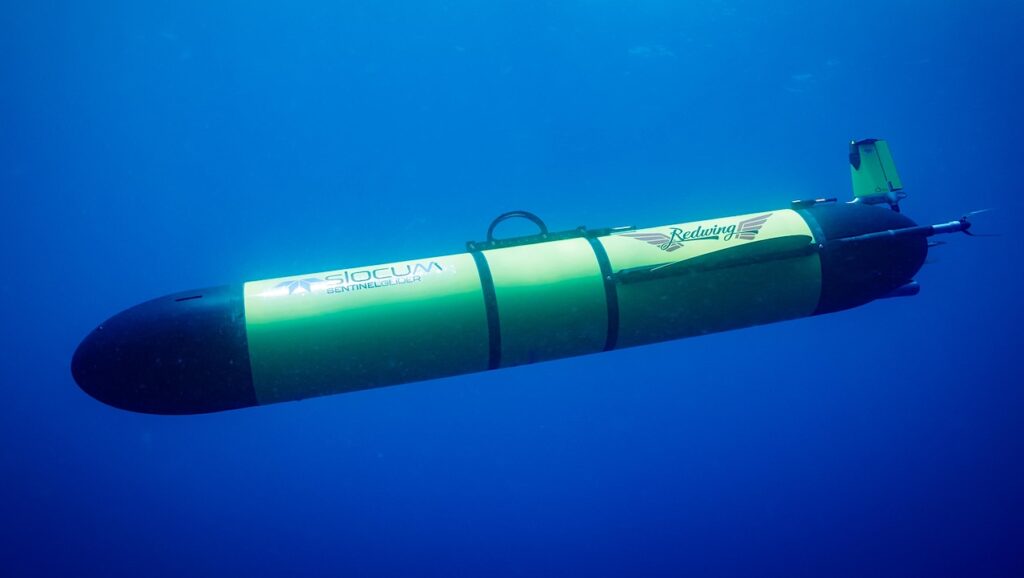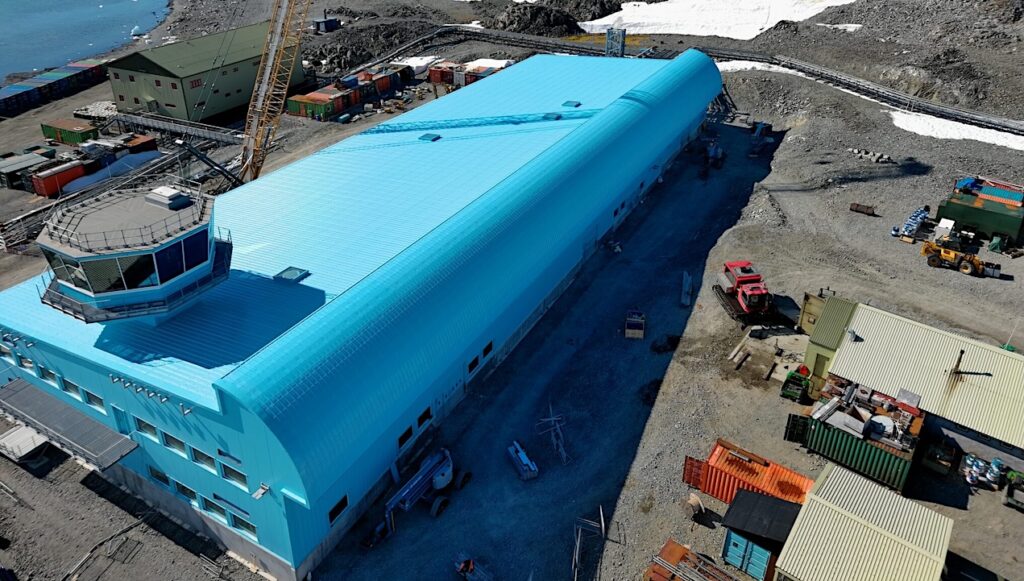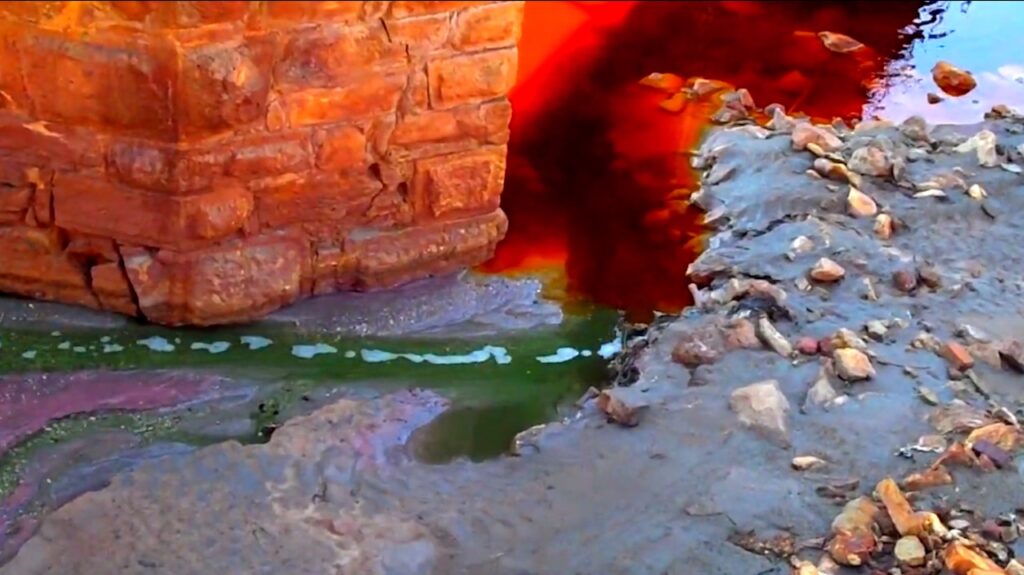Astrobiology eXploration at Enceladus (AXE): A New Frontiers Mission Concept Study
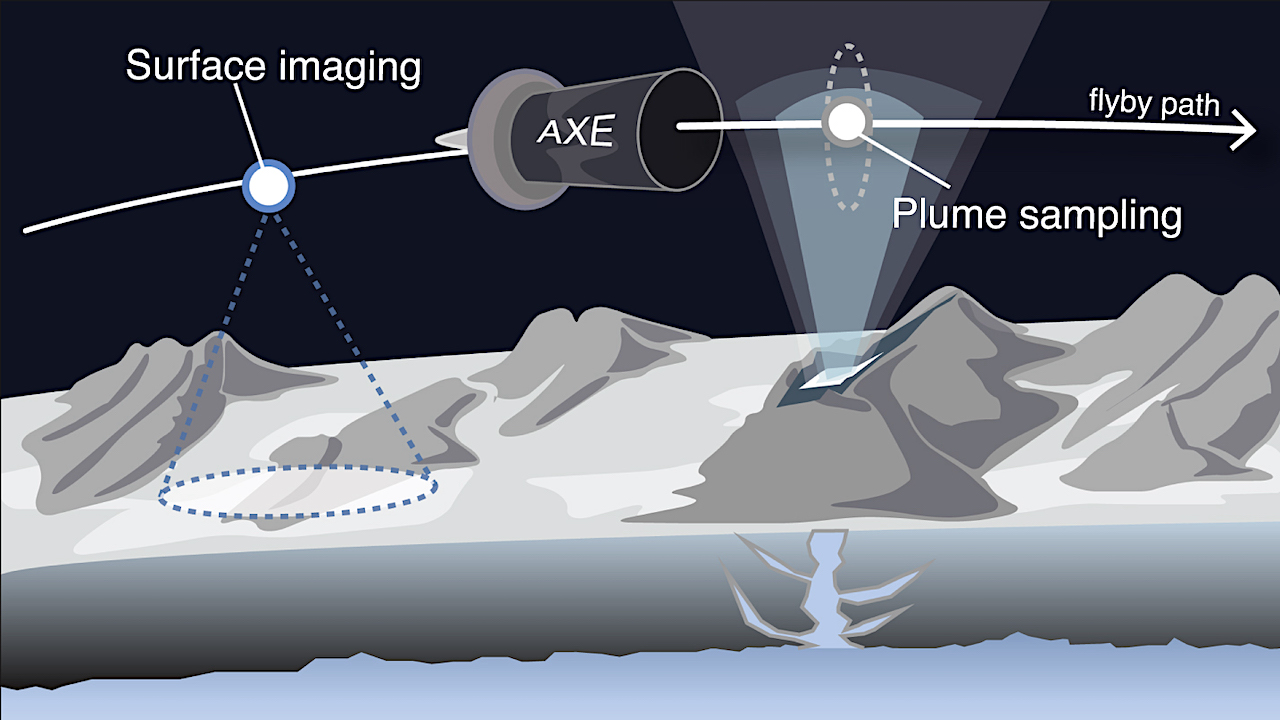
The Saturnian moon Enceladus presents a unique opportunity to sample the contents of a subsurface liquid water ocean in situ via the continuous plume formed over its south polar terrain using a multi-flyby mission architecture.
Previous analyses of the plume’s composition by Cassini revealed an energy-rich system laden with salts and organic compounds, representing an environment containing most of the ingredients for life as we know it.
Following in the footsteps of the Cassini-Huygens mission, we present Astrobiology eXploration at Enceladus (AXE), a New Frontiers class Enceladus mission concept study carried out during the 2021 NASA Planetary Science Summer School program at the Jet Propulsion Laboratory, California Institute of Technology.
We demonstrate that a scientifically compelling geophysical and life-detection mission to Enceladus can be carried out within the constraints of a New Frontiers-5 cost cap using a modest instrument suite, requiring only a narrow angle, high-resolution telescopic imager, a mass spectrometer, and a high-gain antenna for radio communications and gravity science measurements.
Using a multi-flyby mission architecture, AXE would evaluate the habitability and potential for life at Enceladus through a synergistic combination of in situ chemical analysis measurements aimed at directly detecting the presence of molecular biosignatures, along with geophysical and geomorphological investigations to contextualize chemical biosignatures and further evaluate the habitability of Enceladus over geologic time.
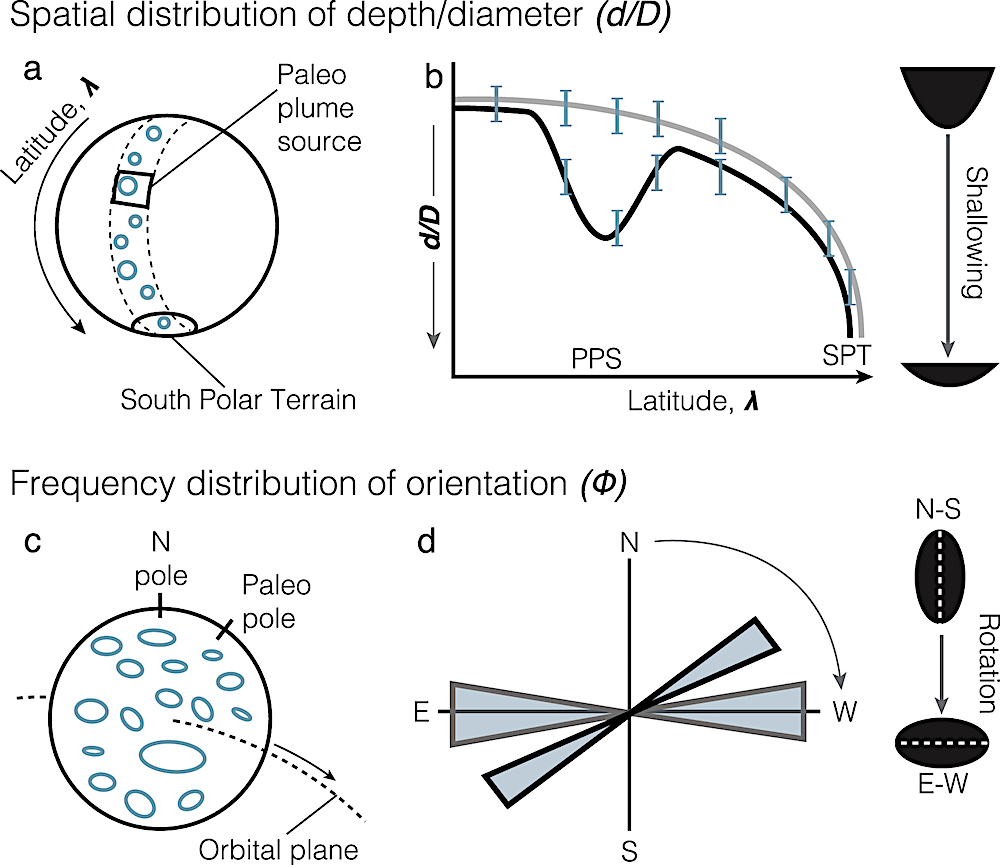
Schematic overview of science closure for crater morphology mapping (Objective 4). The top row summarizes Task 1, which utilizes crater depth and diameter to characterize crater shallowing as a function of space to identify potential paleo plume sources (a) and (b). The bottom row summarizes Task 2, which uses elliptical crater orientation to quantify potential ice shell reorientation (c) and (d). (a) Schematic diagram of Enceladus and key geometries for Task 1. Dashed lines are the swath from the north polar to the SPT. This hypothetical swath intersects a potential paleo plume source (black square). Blue circles symbolize mapped craters. (b) Hypothesized relationship between depth/diameter ratio (d/D) along a latitudinal swath from the north pole to the SPT, with each individual crater plotted as a blue data point (see panel (a)). If craters become shallower (decrease in d/D) only with increasing proximity to the SPT (light gray fitted line), this suggests the present-day SPT was the main source of plume deposit fallout for the duration of its geologic record. However, if there is a crater shallowing signal that points to another source location (dip in black fitted line), this would suggest there was another source of deposit fallout (a paleo plume). (c) Schematic diagram of Enceladus with elliptical crater populations (blue circles), which are likely to have major axis orientations (ø) aligned to its east–west orbit (see the text for an in-depth explanation). The present-day north pole is shown, in addition to a potential paleo north pole at a slight angle. (d) Rose diagram depicting the orientations of mapped elliptical craters (i.e., binned frequency distribution of orientations). If there is only a strong east–west contribution (gray-outlined bins), this would suggest the present-day ice shell and north pole configuration have been in place for the duration of its geologic record. If there is another significant contribution at a different orientation (black-outlined bin), this would suggest reorientation of the ice shell, as measured by the elliptical crater population alignment. — NASA adsabs
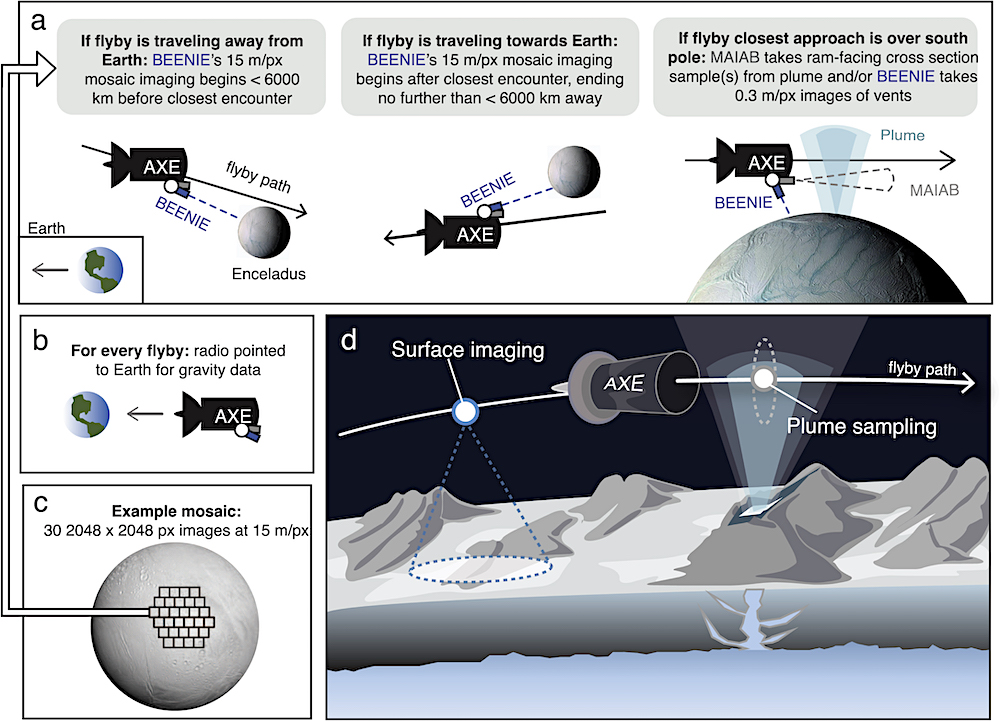
Schematic representation and description of AXE science operations at Enceladus. — NASA adsabs
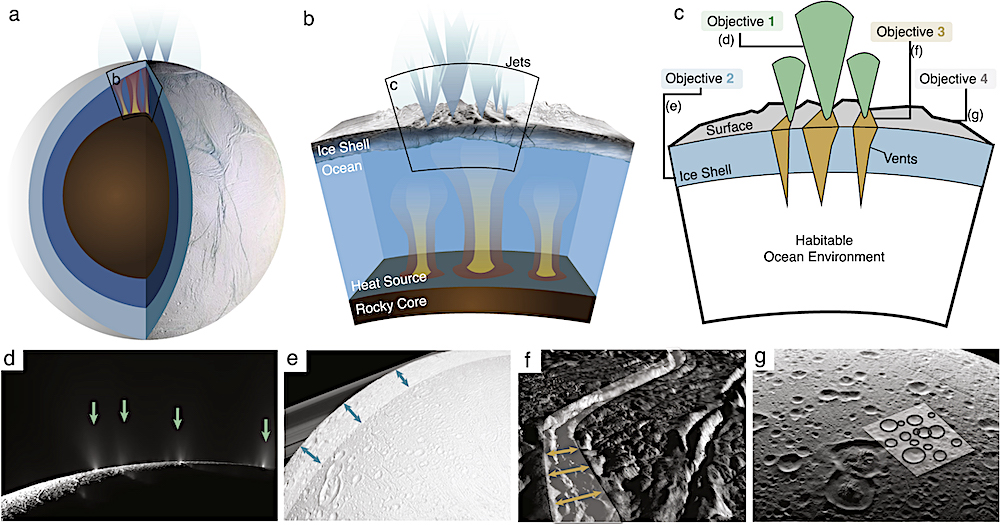
Schematic overview of AXE’s investigation sites and associated science objectives at Enceladus. (a) Enceladus’ interior depicting heat sourced from the rocky core and multiple water jets forming the plume; see (b) for more detail. (b) Key features of the Enceladus core-ocean-ice shell boundaries, including heat source, ice shell, and water ice jets. (c) Area of interest containing all four sites of investigation under AXE: ice/water jets (green), ice shell (blue), vents/fissures (yellow), and surface (gray) (shown, respectively, with CASSINI images in (d)–(g) but lacking the resolution required for AXE science objectives). Each site would address a separate science objective (1–4, see Section 1): (d) plume composition (green arrows) used to examine biological potential (objective 1); (e) ice shell thickness measurements (blue arrows) to determine energy balance (objective 2); (f) vent width variations (yellow arrows) used to determine plume sourcing mechanism; and (g) surface crater mapping (gray circles) to determine plume and ice shell history. Underlying images in (d), (e), (f), and (g) were retrieved from NASA/JPL-Caltech. — NASA adsabs
Astrobiology eXploration at Enceladus (AXE): A New Frontiers Mission Concept Study, The Planetary Science Journal (Open access)
Astrobiology


